Janine Elliot takes a listen to the Krell Digital Vanguard, an integrated amplifier costing £5998 and boasting a whole host of features relevant to today’s modern home. More »
20 years ago Audio Analogue introduced to the world the original Puccini integrated amplifier and it rapidly developed a reputation as a fine sounding and good value amp. It was Audio Analogue’s very first product; the Puccini launched the brand and put the company’s name firmly on the high-end audio map.
To celebrate this anniversary Audio Analogue has created the Puccini Anniversary, a genuine zero feedback design developed by the specialist AirTech R&D department within the Audio Analogue family.
The brief was to create the best Puccini ever – a product that would achieve another landmark turning point in Audio Analogue’s history and pave the way to future products: new, no-compromise designs that would marry analogue musicality with advanced technologies, while remaining true to Audio Analogue’s commitment to providing excellent value for money.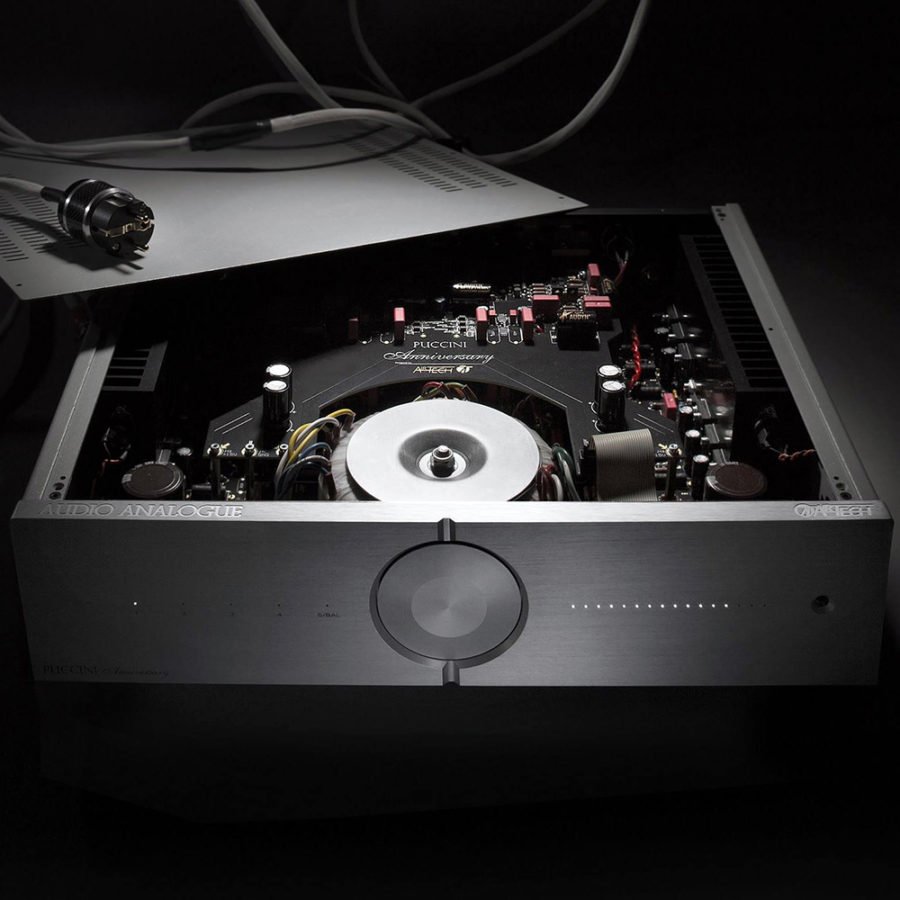
AirTech designer and technical manager of the project, Andrea Puccini (yes, you read correctly – a pure coincidence) and his team spent tireless months during the first stages of R&D on the basic design. In many respects it was a case of intense experimentation based around the bold decision of the philosophy of zero feedback. Well-designed zero feedback amplifiers are acknowledged as having pure audiophile traits such as clarity and detail and a holographic, deep soundstage. The end result is a sound that is more musical and realistic in numerous aspects.
The advantages and disadvantages of feedback-based designs were contemplated in some detail. The elimination of global feedback to obtain optimum performance is not an easy thing to achieve, and so certain technical aspects of the Puccini Anniversary are unique to its design to deliver optimum performance within its zero feedback topology.
The Puccini Anniversary is a fully dual-mono design. The oversized 700VA transformer, together with three pairs of power transistors for each channel, enables it to effortlessly deliver 80W into 8 ohms, rising to 300W into 2 ohms, thus allowing the amp to drive even the most difficult of loads.
As a result of many hours of listening sessions during the product’s development, AirTech’s founder, Claudio Bertini, fine-tuned the Puccini Anniversary to realize the full potential of the design. Bertini selected solid 7N OCC copper wiring along with gold-plated pure copper binding posts. He minimized switching and contact noise by using relay-controlled inputs with gold-plated pure copper RCA sockets soldered directly onto the input circuit board. Separate boards are used for each stage of the amplifier with double-thickness gold-plated pure copper tracks for optimal current flow.
The Puccini Anniversary’s chassis is robust and solid, of practical dimensions and finished with a thick (14mm) brushed aluminium front panel. The minimalist design is further complemented by a single, recessed central control knob that serves a variety of functions: it has a push function for power and input selection, and also activates an encoder that communicates with four digital, high-precision potentiometers (two per channel) for the volume. A choice of four volume ‘curves’ are selectable according to the speaker sensitivity. To finish the elegant aesthetics, white dimmable LEDs were chosen for the indications, while a full remote control completes the package.
Technical specifications
| Sensitivity | (70W @ 8Ω) = 370mV RMS |
| Max power (@ 1kHz)
|
8Ω = 83W 4Ω = 159W 2Ω = 288W |
| S/N
|
100dB (20Hz – 20kHz) 104dB (“A” weighted) |
| Weight | 18kg |
| Dimensions | 445 x 120 x 390mm (W x H x D) |
Audio Analogue’s Puccini Anniversary amplifier is available now, in black or silver, priced at £2,999 (inc. VAT).
The Silver Luna integrated valve amplifier from Polish company Fezz Audio uses EL34 tubes and costs £725 in Poland (and 1700,00 Eur for PRESTIGE export version) , which is something of a budget price for tube amp. Dominic Marsh takes a listen. More »
The Nēo ACE is a complete experience of musical ecstasy” says the company’s latest press release…a bold claim indeed. The ACE is an Integrated Amplifier and Streaming DAC music player meaning you need to simply hook up a pair of speakers, connect to the internet and you are ready to stream your music.
Featuring all-new setup software, this is the most configurable and customisable MOON product ever offered. The ACE includes a high resolution DAC (DSD decoding up to DSD256 and 32- bit/384kHz PCM). The ACE also features a moving magnet phono preamplifier and has RS-232 and IR ports for custom-install environments.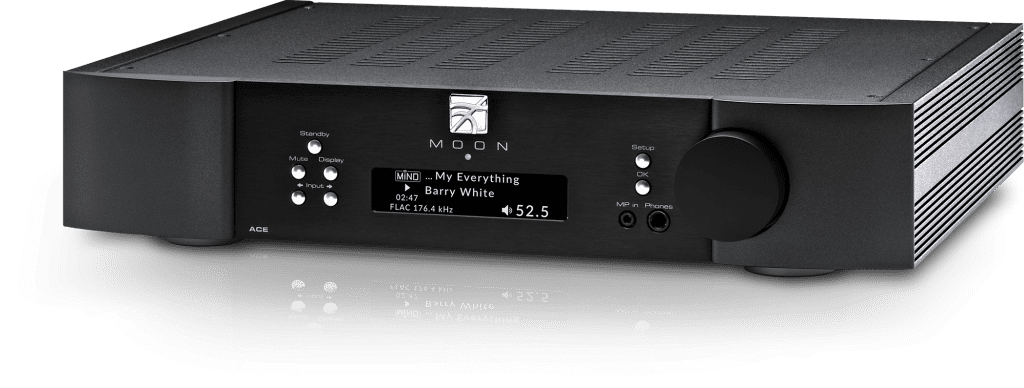
Features
3 line-level inputs including a front-mounted 1/8” mini-jack for personal media players.
Headphone output on 1/4” TRS jack located on the front panel.
Seamless integration with MOON’s MiND app.
Eight (8) digital inputs include USB (hi-res audio), SPDIF (2), Optical (2), aptX® Bluetooth®, Wi-Fi and Ethernet inputs.
The first MOON product using an OLED type screen.
Simple MiND setup via on-board software menu.
Moving magnet phono preamplifier input.
Analogue inputs are configurable to “pass-through” mode, which bypasses the gain stage to accommodate components like a home-theatre processor, whose own volume control is used.
Technical Specifications
Output Power at 8Ω: 50 Watts per channel
Input Sensitivity: 370mV – 3.0V RMS
Input Impedance : 11,000Ω
Gain: 37dB
Signal-to-noise ratio: 100dB @ full power
Frequency response (full range): 10Hz – 60kHz +0/-3dB
Crosstalk: 90dB
THD (20Hz – 20kHz @ 1 watt/50 watts): 0.015% / 0.02%
Intermodulation distortion: 0.05%
PCM Bit-depth range/sampling rates: 16-32bits / 44.1-384kHz
DSD sample rates: DSD64, DSD128 & DSD256
Shipping weight: 24 lbs / 11 Kgs
Dimensions (width x height x depth): 42.9 x 8.9 x 36.6 cm.
RRP: £2,500
The PrimaLuna DiaLogue Premium HP Integrated Amplifier at £2,998 is billed as a fit an forget valve amplifier that avoids many of the  headaches traditionally associated with valve amp ownership. Ian Ringstead takes one for a spin. More »
headaches traditionally associated with valve amp ownership. Ian Ringstead takes one for a spin. More »
Dominic Marsh takes this €4790, chrome plated integrated amplifier from German manufacturer High End GmbH for a whirl to see if its sonic attributes live up to the amps good looks. More »
A full size integrated amplifier with phonostage, plus a CD player that is also a streamer for just shy of £1200 seems like a good deal. Stuart Smith investigates. More »
Parasound has expanded its ZoneMaster custom installation amplifier line with the introduction of three new models. The six-channel Parasound ZoneMaster 650, four- channel ZoneMaster 450, and two-channel ZoneMaster 250 use the same 50-watt bridgeable amplifier circuits, offer the same quality sound, and deliver the same high levels of dependability as the company’s ZoneMaster1250 Universal 12-channel amplifier, which was introduced at CEDIA last year.
“Custom installers are very specific about amplifiers,” said Richard Schram, president and founder of Parasound. “They want reliability, easy installation, impeccable sound quality, and no service calls.The better installers like to use high-performance in- ceiling and in-wall speakers that are more demanding of amplifiers. The rugged, high- current amplifier circuits we use in this line have proven exceptionally reliable in our ZoneMaster 1250, while delivering the same outstanding sound quality which has made Parasound a favourite of audiophiles for over 30 years.”
Every ZoneMaster model uses the same Parasound-designed discrete Class AB input stage and specially selected Class D power stage to achieve sonic performance consistent with Parasound’s audiophile heritage, while meeting industry demand for absolute dependability.
Each 2-ohm stable, high-current channel pair is rated at 50 watts per channel into 8 ohms, and 90 watts into 4 ohms; bridged mode can deliver 160 watts RMS into 8 ohms and 200 watts RMS into 4 ohms.
Each channel pair has an independent oversized power supply for exceptional high- current capabilities.
This combination of high power and low-impedance stability enables each channel to drive multiple speakers. Detachable Phoenix-style speaker connectors accept up to 12-gauge wire, with separate connections for two speakers per channel; up to 24 in the case of the ZoneMaster 1250.The three new models are 1U (1 rack space) high and the 1250 is 2U high. Models 250 and 450 are one-half rack space wide, while the 650 and 1250 are full rack width.
In addition to full-range applications, the ZoneMaster 250 can also be configured to drive in-wall and passive subwoofers thanks to its built-in 18dB/octave low-pass crossover.
All ZoneMaster amplifiers include independent level controls for each channel as well as a speaker-level input making them compatible with any receiver or existing audio system. Installers can choose between a 12-volt turn-on trigger or audio- detection trigger for each zone independent. The 650 and 1250 also include bus inputs with loop outputs. All ZoneMaster models offer exceptionally “green” power consumption with minimal standby power consumption meeting Energy Star and European Union specifications.
All three models are now in stock at AV Distributors European warehouse.
The Parasound ZoneMaster Model 650 has an MSRP of Eu1699. The ZoneMaster 450 and 250 have MSRPs of Eu999 and Eu699 respectively.
The previously-introduced ZoneMaster 1250 has an MSRP of Eu2999.
McIntosh has introduced three new products at this year’s Consumer Electronics Show (CES 2016): the MX122 A/V Processor, MB50 Streaming Audio Player and RS100 Wireless Loudspeaker.
MX122 A/V Processor
The MX122 A/V Processor can serve as the brain centre for an advanced home theater system for years to come. It features many of the latest breakthroughs in surround sound and object-based 3D audio such as Dolby® Atmos, and will be upgradeable to support DTS:X™ and Auro-3D®. Besides 3D audio, existing formats like Dolby
TrueHD, DTS-HD Master Audio™ and others are still supported. The MX122 is fully compatible with modern 4K Ultra HD video sources and can upscale lower resolutions to 4K Ultra HD. A wide assortment of inputs and outputs are included to connect current and future entertainment sources. All HDMI inputs and outputs are HDCP 2.2 and support High Dynamic Range (HDR), 4K Ultra HD at 50/60Hz, 4:4:4 color, Rec. 2020 and 3D video pass-through. The MX122 can send select audio and/or video to 2 additional zones within in the house. Users can connect to their online digital music with either the wired or wireless network connections. DSD64 files can be played from flash drives or over the network. Bluetooth and AirPlay® connectivity allows for easy streaming from mobile devices. Interfaces to popular streaming services including Pandora®, SiriusXM® and Spotify® are included while vTuner connects to 1,000s of internet radio stations. Audyssey MultEQ® XT32 will calibrate the MX122 to each home theater’s unique acoustical properties.
MB50 Streaming Audio Player
A home audio system can be transformed into a wireless audio system with the MB50 Streaming Audio Player. The MB50 features DTS Play-Fi® technology to give the freedom and flexibility to wirelessly play music at home over an existing Wi-Fi network. While utilizing DTS Play-Fi streaming capabilities, the MB50 delivers the legendary McIntosh sound quality and performance found in our other home audio products. Simply connect the MB50 to a Wi-Fi network and audio system via the analog or digital outputs and then stream music to it from the Apple or Android mobile app or Windows desktop app. Besides accessing a personal music library on a mobile device, the apps have built-in support for many leading online streaming services including Deezer, KKBox, Pandora®, QQMusic, Rhapsody, SiriusXM®, Songza, Spotify® and TIDAL (list subject to change). If there’s more than one audio system to stream to, just add an MB50 to each and then stream the same music to all systems. Or if there are multiple mobile devices with the app, different music can simultaneously be streamed to each system.
Analog and digital inputs allow for connecting audio components such as CD players, letting the MB50 to act as a mini-preamp.
RS100 Wireless Loudspeaker
The RS100 wireless speaker allows streaming music capabilities to be added to any room. It features DTS Play-Fi® technology that gives the freedom and flexibility to wirelessly play the music on mobile devices over an existing Wi-Fi network. Simply connect it to a Wi-Fi network, install the free Play-Fi Apple or Android mobile app or Windows desktop app and then begin streaming. A single RS100 is all that is needed to start building a wireless speaker system; more can be added over time to expand the system. Up to 16 speakers can be connected to a single Wi-Fi network – enough for stereo playback in 8 separate rooms. With the Play-Fi app installed on multiple devices, each device can stream different music to each room, giving all family members or guests control over what they want to hear in their room. Besides accessing a personal music library, the apps have built-in support for many leading online streaming services including Deezer, KKBox, Pandora®, QQMusic, Rhapsody, SiriusXM®, Songza, Spotify® and TIDAL (list subject to change). Not limited to just streaming, the RS100 is flexible thanks to its auxiliary input which allows it to be used in non-streaming setups; it can quickly be switched back and forth between the two inputs to accommodate listening preferences. A subwoofer output is also included.
All three products are available to order now from authorized McIntosh dealers with shipping anticipated in January for MX122 and in March for MB50 and RS100. Suggested retail price for each (VAT, shipping and any customs duties related to current standards of individual countries are excluded):
MX122: $7,000 USD
MB50: $2,000USD
RS100: $1,000 USD per speaker
Last year, Aavik Acoustics released their very first amplifier, the integrated amplifier Aavik U-300 and now the Danish company is to introduce two new amplifiers to the 300 series: the Aavik P-300 power amplifier and the Aavik C-300 preamplifier.
The two new Aavik Acoustics amplifiers will be introduced at the 2016 CES in Las Vegas.
The Aavik P-300 power amplifier devices never stop conducting current. This means that the amplifier circuitry never has to deal with residuals such as switching spikes and device “latchings”.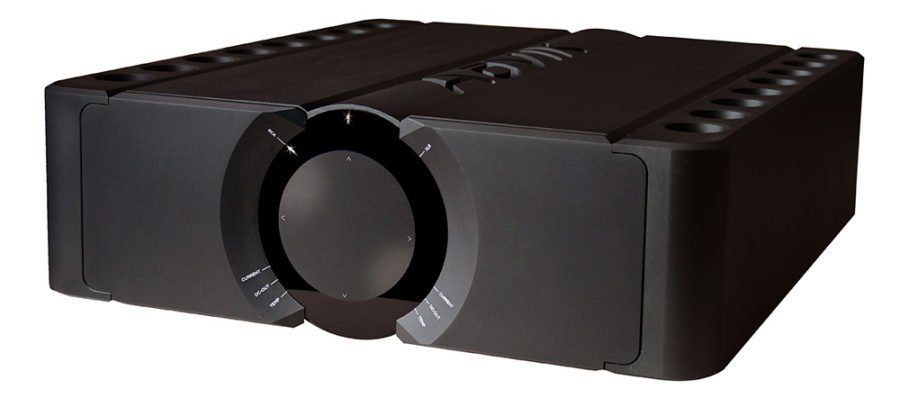
The Aavik P-300 has an ultra short and simple signal circuit design, where all gain and feedback is performed by a single transistor pair. This short signal path gives the Aavik P-300 a gain structure with extremely low distortion and a more than 90-degree phase margin for amplifier stability.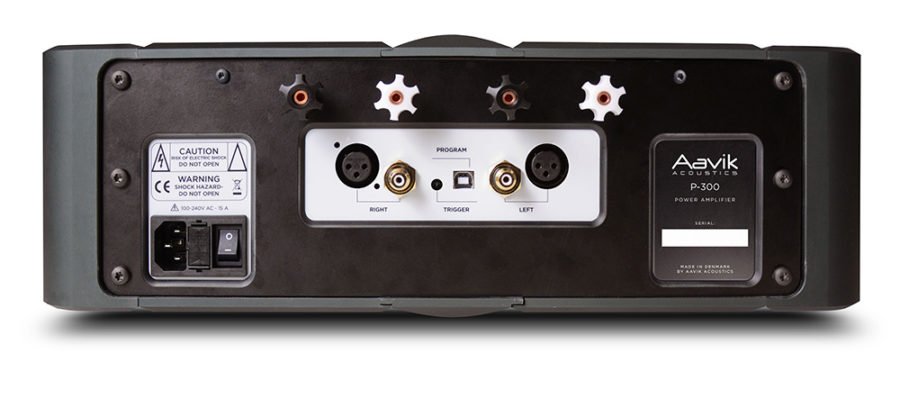
The Aavik P-300 has four 600 W power factor corrected resonant mode power supplies. The in total 2400 W power supply combined with the extremely large electrolytic power banks allow the Aavik P-300 to deliver peak currents in excess of 80 A.
The Aavik C-300 preamplifier
The Aavik C-300 is equipped with two built-in DACs (PCM and DSD) and a phono section. It also comes with three line inputs: two single-ended and one balanced, and an RCA and an XLR output.
The virtual ground circuits eliminate the possibility of injecting dirty ground noise into the delicate audio circuits.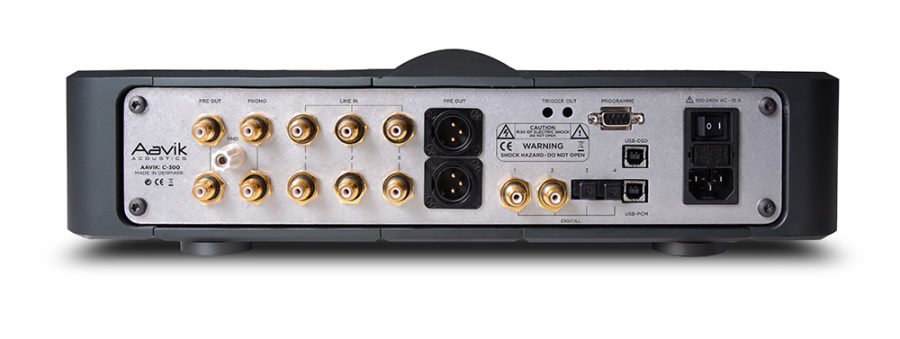
Design
Aavik Acoustics’ inspiration from Scandinavian design traditions is easily found in the Aavik P-300 and C-300 amplifiers with their simplistic functionality and their beautiful minimalistic design. All chassis in the 300 series are made of anodized aluminium.
McIntosh Laboratory has launched a new feature-packed processor. The new MX160 replaces the existing MX151 and brings the McIntosh sound and build quality to home cinema connoisseurs everywhere.
The new MX160 supports RoomPerfect™ room-correction technology, which adjusts the audio to the specific acoustics of the room. It also supports new object-based 3D audio formats, including Dolby® Atmos and Auro-3D®
There’s support for Dolby TrueHD, DTS-HD Master Audio™ and, of course, other popular legacy formats including DVD and Blu-ray™. All audio is processed according to the McIntosh sound and performance standards, not found in any other home cinema processor.
There’s full support for 4K Ultra HD native sources, plus up-conversion to 4K Ultra HD for the best possible picture quality from 1080P, 720P and 576P/480P inputs. The MX160 offers an incredible eight HDMI inputs and four outputs for current and future TV compatibility, plus offers a 3D video pass-through feature. An HDBaseT output is also included to provide degradation-free, uncompressed digital video and audio, over long cable runs between the MX160 and projectors or televisions.
The MX160 features balanced outputs for 11.1 (also known as 7.1.4) audio channels, plus four auxiliary channels for use in bi-amping speakers or driving additional subwoofers. For digital audio sources, the MX160 features four optical and three coaxial inputs, one USB (up to 24-bit/192kHz data), plus an XLR connector. For analogue audio, there are two sets of stereo balanced inputs, four sets of stereo unbalanced inputs, a dedicated phono input, plus a set of 7.1 multichannel unbalanced inputs.
All analogue and digital connections can be custom-named for simplified system operation and matched in volume level for a smooth transition between sources. Bass and treble controls offer further audio fine-tuning.
The classic black glass front panel, knobs, illuminated logo and custom-machined brushed- aluminium end-caps make the MX160 a rousing addition to any home cinema system. It can be paired with a variety of McIntosh amplifiers and speakers for a complete home cinema system; UK distributor Jordan Acoustics is happy to advise.
Like all its products, the MX160 is handcrafted in the Binghamton factory (NY) and boasts classic 1950s styling with contemporary features and performance.
The MX160 sells for £13,995 and is available to order now from Jordan Acoustics in the UK
Luxman, one of the world’s oldest and most revered audio manufacturers, enters its tenth decade of with the arrival of the L-590AX Mark II – the best integrated amplifier the company has ever produced. The amp operates in pure Class A and is said to be a culmination of all that Luxman has learned since launching Japan’s first high-quality integrated hi-fi amplifier, the valve-based SQ5A, in 1961.![L-590AXII_Email[2]](https://hifipig.com/wp-content/uploads/2015/12/L-590AXII_Email2.png)
At the amp’s heart lies Luxman’s fourth-generation ODNF (Only Distortion Negative Feedback) circuit, sporting a three-parallel push-pull structure with three-stage Darlington. This restricts feedback to distortion components only, enabling a fast primary slew rate, ultra-wide bandwidth and enhanced signal-to-noise performance.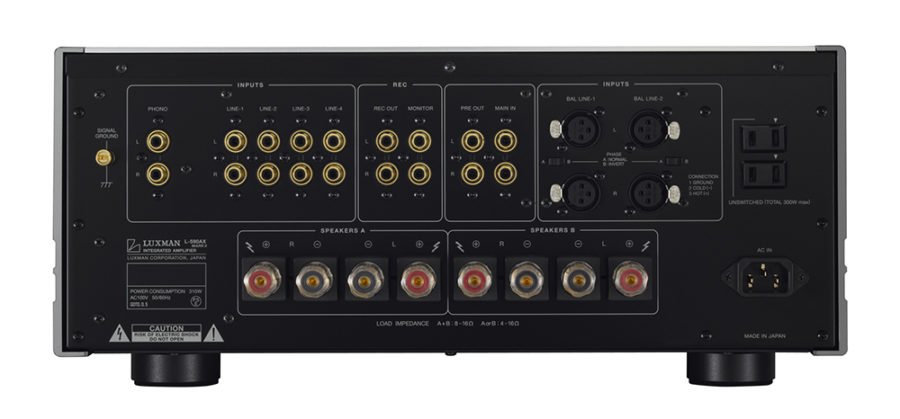
The preamp section borrows much technology from Luxman’s flagship C-900u preamplifier, including the LECUA 1000 attenuator circuit, which provides an extremely fine degree of volume control and left/right balance adjustment. Power is rated at 30W per channel into eight ohms, doubling to 60W per channel into four ohms – a healthy output for a pure Class A design, with sufficient power on tap to drive any loudspeakers of suitable quality.
The L-590AXII’s high-inertia power supply circuit features a substantial transformer. A high-capacity block capacitor contributes to the amp’s ability to deliver abundant power instantaneously yet, while its low-impedance transmission design, fully optimised signal paths deliver “maximum sonic fidelity”.
The L-590AXII includes bass and treble tone adjustment, a ‘loudness’ control for low- level listening, a ‘line straight’ button that bypasses the tone controls, and phase selection for the balanced inputs. Turntable users are well catered for, as befits the current vinyl revival, with an onboard phono stage switchable for MM and MC cartridge types. A headphone output is also included.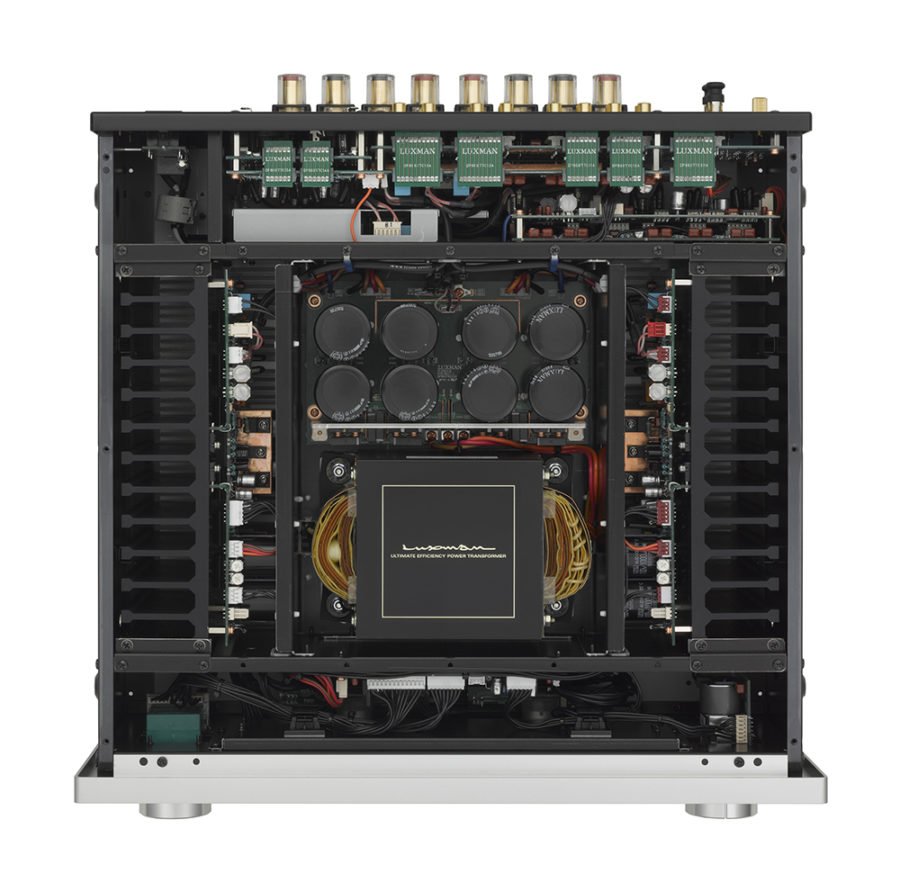
In classic Luxman style, the L-590AXII’s fascia sports two illuminated VU meters, one for each channel, giving a real-time indication of signal level. Around the back are six line-level inputs (four single- ended RCA and two balanced XLR) alongside the phono input for turntables, plus two sets of heavy-duty speaker binding posts. Also present are record-out, monitor-in and pre-out terminals, an external preamp input for integration with an AV system, and two remote output terminals for integrated system control.
The Luxman L-590AXII integrated stereo amplifier is available from selected audio retailers from January 2016, priced at £6,995.
Fezz Audio are based in Poland and make the Fezz Audio Silver Luna valve amplifier. The basis for the creation of the whole Fezz Audio project is a family business known as Toroidy.pl who supplies mains transformers to a myriad of audio companies and they have partnered with a host of well known brands including inter alia, Mytek (the “Manhattan DAC”), Lampizator, Amare Musica, Audio Valve, Ancient Audio, WILE, and Baltlab.
“A few years ago we have decided to create something that would change the “rules of the game”, break the stereotype. It was supposed to be a Toroidal Speaker Output Transformer, but one that is destined to work in “Single Ended” designs. We succeeded. The design work pertaining to such a construct lasted three years. During that time, we developed a unique toroidal core and winding production technology. Thanks to those developments, we are now able to design, and what is most important, to produce speaker output transformers for virtually any type of vacuum tube, irrespective of topology type, be it Single-Ended, or Push-Pull” says Maciej Lachowski from the company.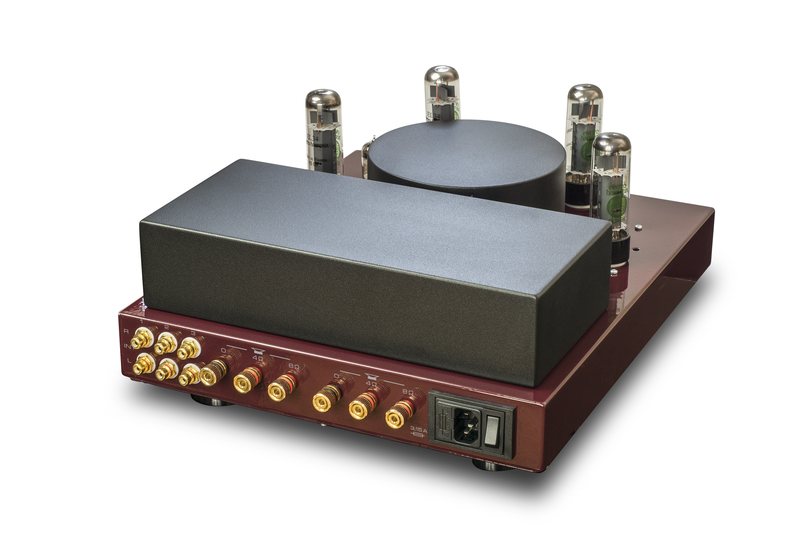
First the company built the Laura SE amplifier which came out of the company wanting to build a proof-of-concept as the general thinking in the market was that a single-Ended tube amplifier that uses toroidal transformers would not be workable.
The interest in Laura SE at last year’s Warsaw show exceeded the company’s expectations and so the production of speaker output transformers commenced in full swing. But in the meantime Maciej had other ideas along the lines of creating a wholly new commercial brand, designing a vacuum tube based amplifier for retail and positioned at an affordable price-point.
And that is how the Fezz Audio Silver Luna came to be.
Specifications
Maximum output power : 2 x 35W / 8Ω
Circuit type : AB1 class
Output impedance : 4Ω / 8Ω
Inputs : 3 x
RCAHarmonic distortions THD : < 1%
Frequency response : 15Hz-77kHz (-3dB)
Power consumption : 150WAC fuse : 3,15A
TNet weight : 15,3kg
Dimensions : 400x320x165mm
Tubes : EL34 x 4 (power output), ECC83 x 2 (pre-amplifier and power drivers)
French based Cabasse make the renowned Sphère loudspeaker system, but they also produce more modestly priced items.Here Dominic Marsh takes a listen to the Stream 100 amplifier (£499) and Surf loudspeakers (£379) More »
After reviewing the Merrill Audio Veritas monobloc power amplifiers in January 2015 Stuart Smith auditioned the American company’s $4800 Thor amps. More »
Tangent Audio announces the introduction of their new micro amplifier, appropriately named, Ampster.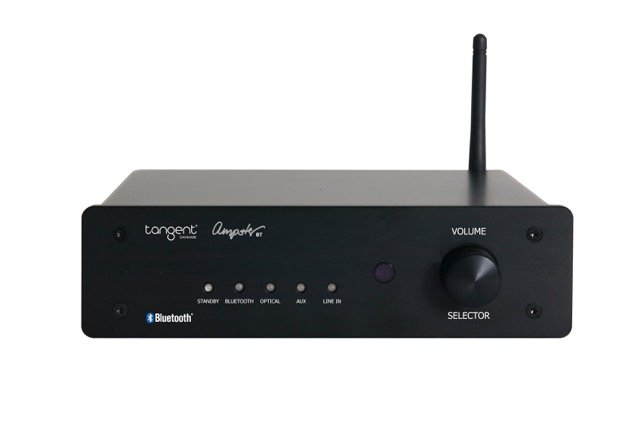
Tangent’s new Ampster BT is a micro sized amplifier with a host of connectivity options including wireless Bluetooth 4.0, Digital optical input, Analog RCA and AUX inputs and a Sub output.
When left idle on the Bluetooth source, the Ampster BT will go to standby automatically and wake automatically when you start playing a Bluetooth source again.
Ampster BT provides 2 x 50 Watts controlled by a remote to switch between sources and volume level.
Key Features
- 2 x 50 watts output
- Bluetooth 4.0 in
- Digital and analog RCA input
- 5mm Aux input
- Stylish Remote control
- Wake on Bluetooth
The Ampster is available in the UK now at a retail price of £149.95.
- Power: 2 x 50 Watt
- Inputs: Bluetooth, 3.5mm AUX, Analog RCA, Optical Digital
- Output: Subwoofer out
- Frequency: 20 – 20,000 Hz
- Impedance: 4 ohms
- Weight: 1.85 Kg
- Dimensions (WxDxH): 190 x 139 x 52mm
- Standby: less than 1W (EUP2013)
- Remote Control
On the 12th December KJ West One in London are teaming up with Devialet to bring an exclusive first UK presentation of their new limited edition ‘Expert’ amplifier, Le 900 (or Original D’Atelier) to KJ West One. Hifi Pig got a sneak peek of these recently in Paris and they look beautiful!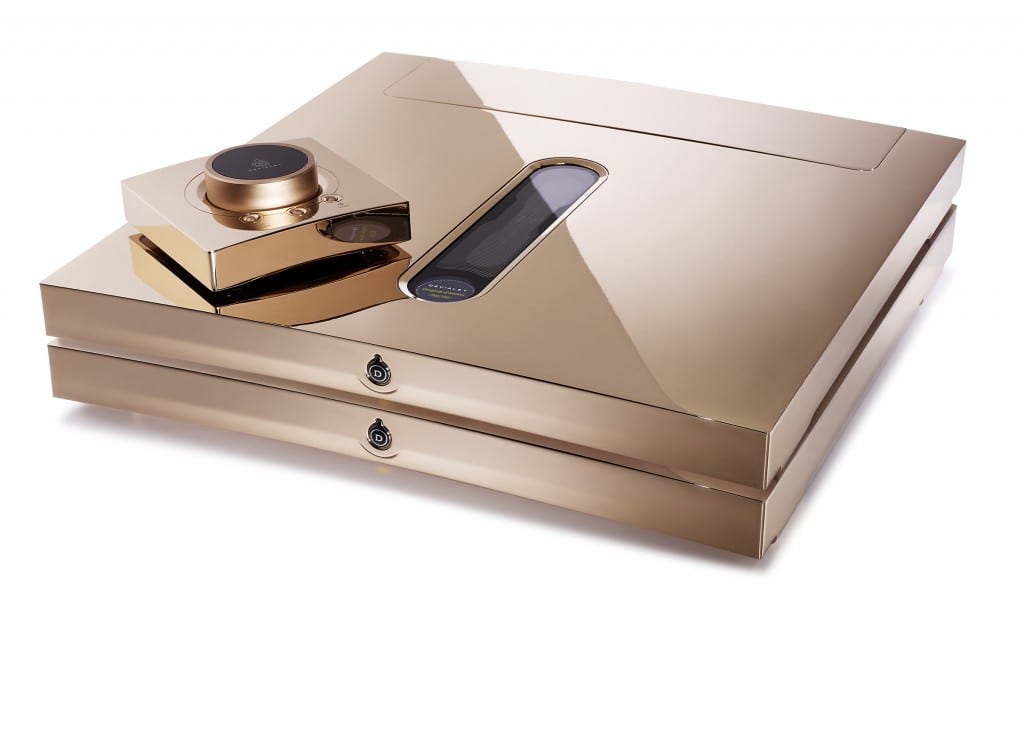
Le 900 is a special product which has been created by Devialet for just 100 units. As the company says ‘A new audiophile icon is born’.
The new model features many upgrades from the previous Le 800 including a newly designed board in the ADH hybrid core which allows for more power transmission, without any size variation. The Class A amplifier has also been optimised to expand its audio performance to 900W and more.
A new thermal management system has been developed. The area of exchanges between the electronic boards and the casing is now doubled.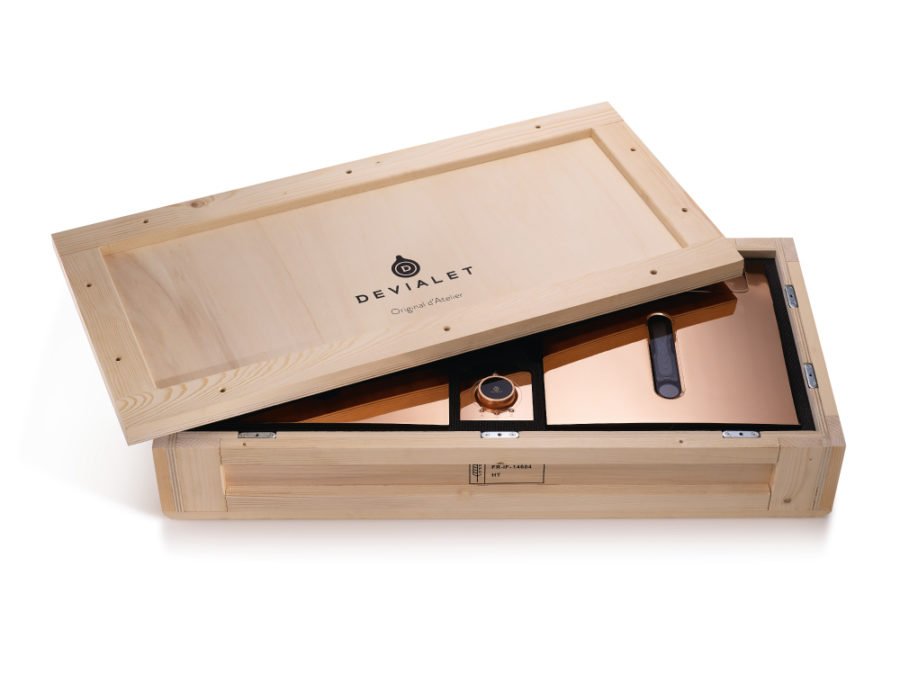
The power supply for Le 900 has been improved and uses a new card which filters out unwanted noise from the mains. The supply has also been optimised to increase the power transmission capacity allowing it to react more precisely to the power requested by the amplifier.
Why is Original D’Atelier unique?
- Each piece is individually numbered from 1 to 100. This will be the only batch ever created by the company.
- The 900 chassis is carved out of a single aluminium block and features a stunning hand polished Copper Gold finish.
- The Copper coated plate is a unique piece, signed by Devialet founder Pierre-Emmanuel Calmel.
SAMLab Comes to KJ
If you use a Devialet Expert amplifier, but your speakers are not currently SAM compatible, don’t worry. Devialet will be bringing their ‘SAMLab’ to the event.
A Devialet engineer will be on hand to analyse your speakers. If you would like your speakers to be SAM compatible, book yourself in for a session with the engineer.
You will need to bring along at least one of your speakers. The sessions will last between 30 minutes and an hour, so we are limited to 10 sessions. These will be first come, first served.
Devialet consultants will be on hand, running demonstrations of Le 900, the ‘Expert’ range and Phantom. This event is a must attend for any Devialet fanatics.
We look forward to seeing you at the event.
Saturday, 12 December 2015 from 10:00 to 17:30 (GMT)
Totem Acoustic from Montreal, Canada, just launched its first Kickstarter campaign to fund production of the first series of its new ARC amplifier. Since Totem is known primarily in the HiFi technology scene for its speakers, the ARC represents a new adventure into the realm of amplifiers.
The ARC is not just another HiFi amplifier the company say, but possibly the first in line of a new generation of digital amplifiers. Totem likes to call it “The next generation of digital amps” adding “This amplifier allows all digital music to be played on a HiFi system with the sound quality of any large sound system”.
The ARC allows Bluetooth audio wireless streaming from any digital device directly to almost any 8-ohm speaker system. Small and easy to use, all that is needed is a pair of speakers and the ARC. With the integrated Bluetooth audio wireless connection, the ARC works autonomously with a set of speakers and a smart phone. It can also be hooked up to a computer via USB. The ARC will thus act as a USB audio device, but will switch automatically to Bluetooth Audio if it is connected to a smart phone.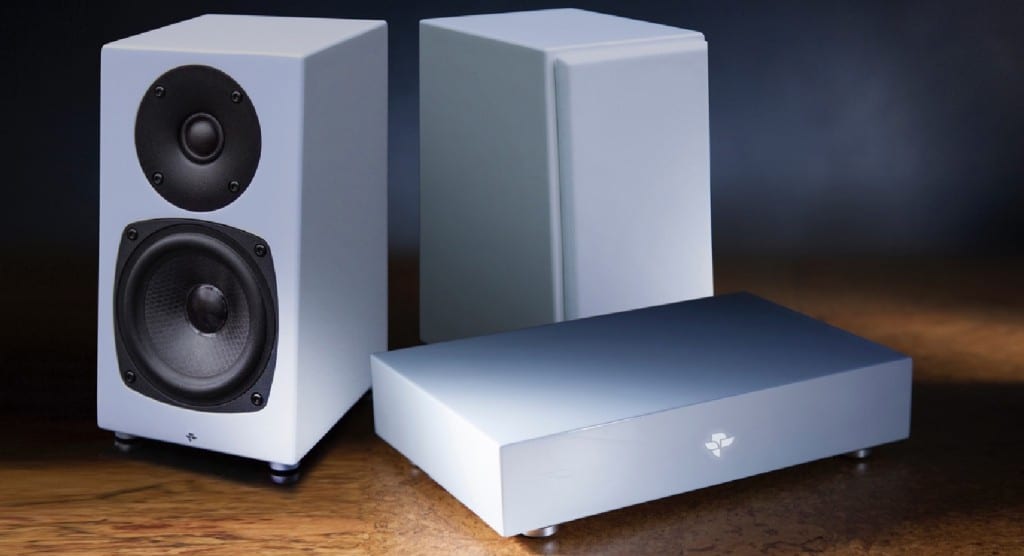
“Today most of the music we listen to is digital; it’s on our phones, our laptops or streamed from the web. But there is gap, a missing link, when it comes to listening to our online music library or internet streaming music on a good HiFi system. As music passionate, we know that high-end quality is absolutely irreplaceable when it comes to a great listening experience and immersive sound. That’s why we created the ARC,” explains Gabriel Bull, Director of Technology at Totem Acoustic.
“All you need is a set of nice speakers and the ARC. Done. Now go ahead and play your music collection from your computer, smart phone, or any internet radio streaming on your existing HiFi setup or run out and get yourself some nice sounding speakers,” says Robert Valtierra, Research and Development Engineer in the field of Electronics and Embedded Systems and inventor of the ARC.
Being the size of a book, it can be placed anywhere. The ARC has no buttons or knobs; it turns on automatically when you connect to it. With a total power of 120W, it runs at high efficiency thereby providing large amounts of audio output power while requiring very little space and without need for heat sinking.
The ARC is a fully-integrated amplifier system. Amplification is provided by the latest in Class-D amplifier technology. It is designed using digital inputs: USB Audio 2.0 and Bluetooth aptX Audio. The USB audio connection delivers 24-bit resolution and sampling rates up to 192 kHz. The Bluetooth connection can provide a “CD-quality” connection via aptX.
Although the ARC performs on its own initiative, it is possible to customize sound with the free and optional ARC App.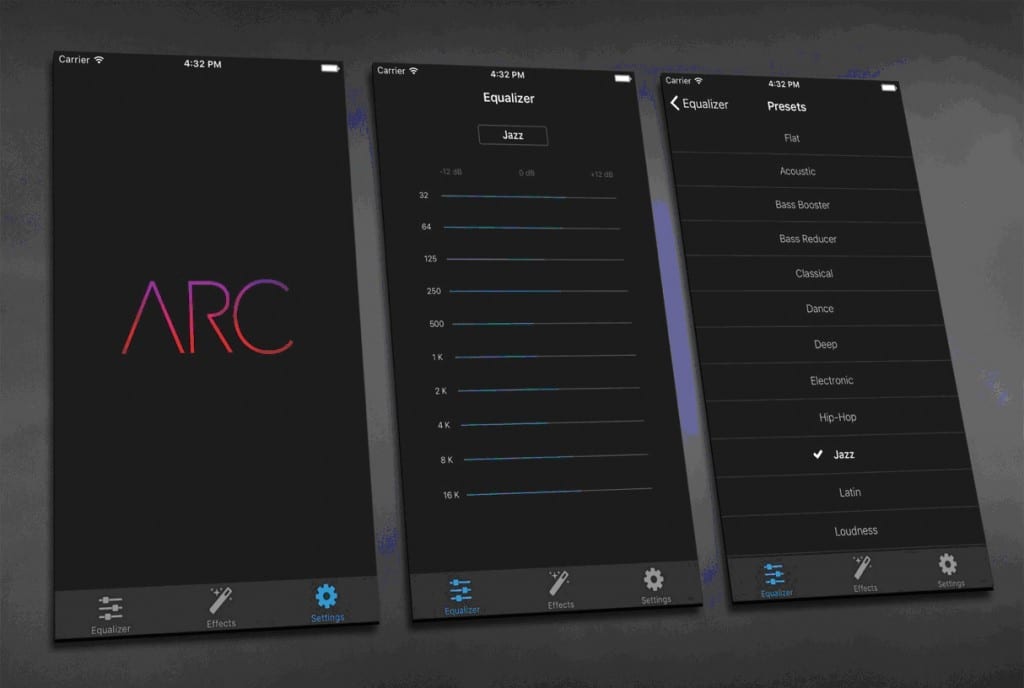
| Built-in, powerful digital Class-D amplifier | Class-D. Maximal rated output 120W (2 x 60W into 8-
ohms, THD+N<0.05% @ 1kHz) with both channels driven, 20 Hz-20 kHZ-AES17 measurement bandwidth. |
| Silent operation | As the amplifier does not produce any heat, there is no need for a noisy fan — all you hear is the music. |
| Full range output | The Arc allows for 2.1 installation to achieve more bass power. The optional and free Arc App allows for more subtle adjustment of frequencies. |
| Speaker connections | Push Gold plated posts |
| Auxiliary output | RCA type line-level output |
| Audio formats supported | All audio formats supported. |
| Internet radio supported | All streaming radios supported |
Suggested retail price: $350 US
Audio Research say they are pleased to announce that the GSi75 integrated amplifier, the third member of the G-Series, is finally a reality and in production. First shown as a prototype at the Munich High End show in 2014 (And very nice it looked too), the final production version has grown in size, versatility, and performance with Audio Research calling it the Swiss army knife in their lineup.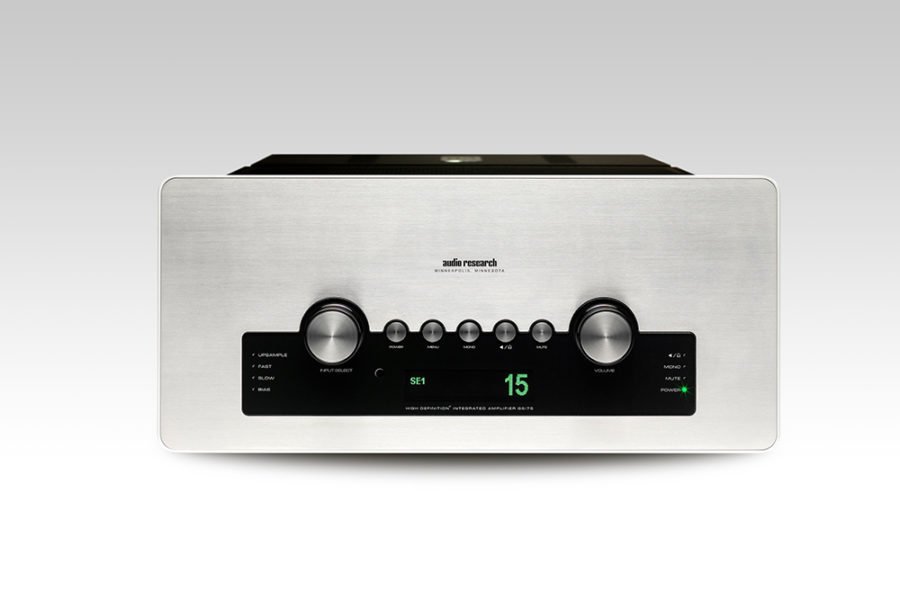
The GSi75 is more than a simple integrated amplifier, it is a one-box solution that includes both a high per- formance DAC and phono stage; all you need is a digital source, a turntable, and speakers…it even has a tube headphone section.
The DAC in the GSi75 is the companyy’s most advanced design, handling digital sampling rates up to 384kHz and DSD 1x and 2x, in both native and DoP formats via USB 2.0. True, native DSD bitstreams are resolved with no PCM conversion. In addition to the USB input, the GSi75 also has Toslink and RCA inputs. Fast and Slow filters are selectable, as is Upsampling to 352kHz or 384kHz. A separate driver is not required for Mac.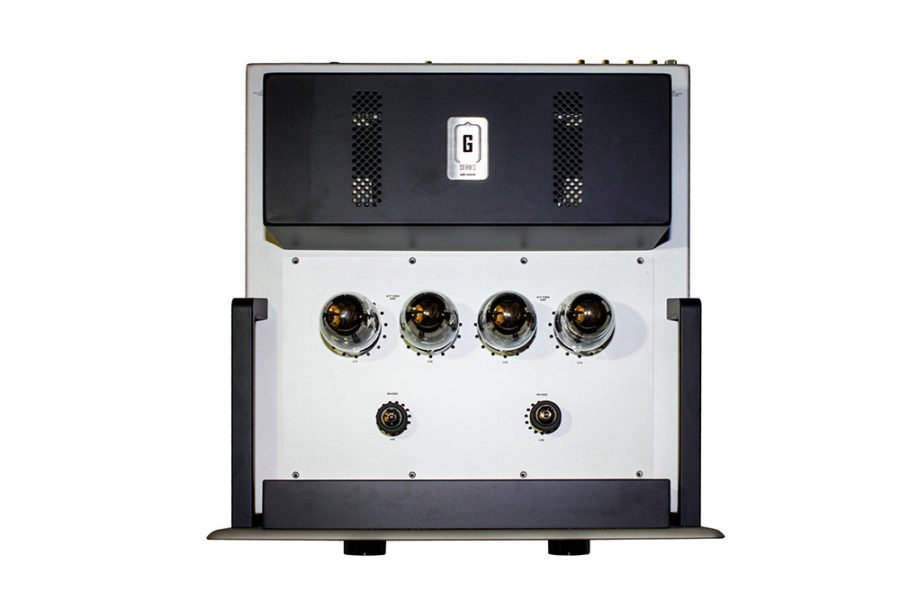
The phono section has switchable 45dB or 62dB gain for use with MM or MC cartridges. Input impedance is selectable (47k, 1000k, 500, 200 or 100 ohms) via the front panel or the remote.
In addition to the digital and phono inputs, there are three other SE inputs, one of which can be configured as a home theater pass- through. The GSi75 has an IR input, and is also controllable via RS-232. The GSi75 has two 6H30 driver tubes and four KT150 output tubes that should last 3,000 hours. There are 4 and 8ohm speaker outputs.
“The GSi75 is a sonic knockout, with clarity, dynamics and the same engaging immediacy that you have come to expect from the GSPre and GS150” say the company. Visually, it has the same elegant esthetic as its siblings, featuring a welded, hand-finished, brushed aluminum chassis, matte black transformer cover, black side handles, and a remov- able (perforated black) tube cage.
UK importer Hidden Systems has been in touch to tell us about the continued success they are having with the Lejonklou range of phono stages, preamps and power amps, which we at Hifi Pig had not come across previously.
The brand is designed by Frederick Lejonklou and he says “Building the best Hifi is like building a musical instrument. Every detail matters. While a lot of companies like to claim they pay attention to detail, we mean it in an extreme way.”
The Lejonklou range includes:
Sagatun Preamplifier
Sagatun Mono Preamplifier (Pictured)
Tundra Stereo Power Amplifier
Tundra Mono Power Amplifier
Gaio MM Phono Stage
Slipsik MM Reference Phono Stage
Janine Elliot takes a step down memory lane with the much loved Leak Stereo 20 power amplifier. More »
After 40 years of creating audio equipment, the last thing that artist-designer Kostas Metaxas wanted to produce was “another box with transistors on a heatsink”. He was apparently inspired by ‘the most spectacular architecture, design and sculpture’ he had experienced and ‘wanted to bring that emotional intensity, daring and seductive beauty to an audio amplifier.’
The Solitaire 2016 is the result. Machined from a solid block of either aircraft aluminium, copper or titanium, it’s totally bespoke and Metawas claims that ‘the modular electronics make it future-proof’. Even the circuit boards are CNC machined from 1mm solid silver coated clear polystyrene. 100% designed and engineered by Kostas Metaxas, each amplifier is assembled by his sons, either Andreas or Alessandros Metaxas.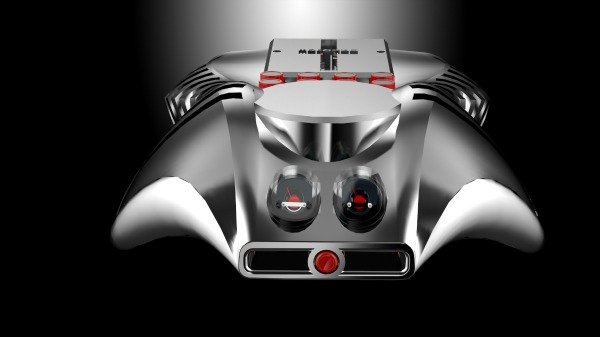
The Solitaire 2016 along with the Ikarus Integrated Amplifier and Opus preamplifier will be “world premiered” at the Munich High End Hifi Show in May 2016. A Studer A80 will be playing 10″ Analogue Master Tapes from a selection of the over 300 Classical and Jazz concerts recorded by Metaxas on his modified Stellavox Tape equipment. Hifi Pig will be there to report back on how they sound.
The Collatio OTL Series is a special project, and is Aries Cerat’s statement on how they think a true SOTA OTL amplifier should sound.
The Collatio II istheir showcase, a statement, a cost no object approach on OTL tube amplification, “pushing the envelope on what is possible on OTL technology”.
The Collatio II amplifieruses aproprietary design, and it is in fact a current amplifier which “have their own technical and sonic advantages, and if especially matched with highly efficient horn speakers, are simply unmatched”.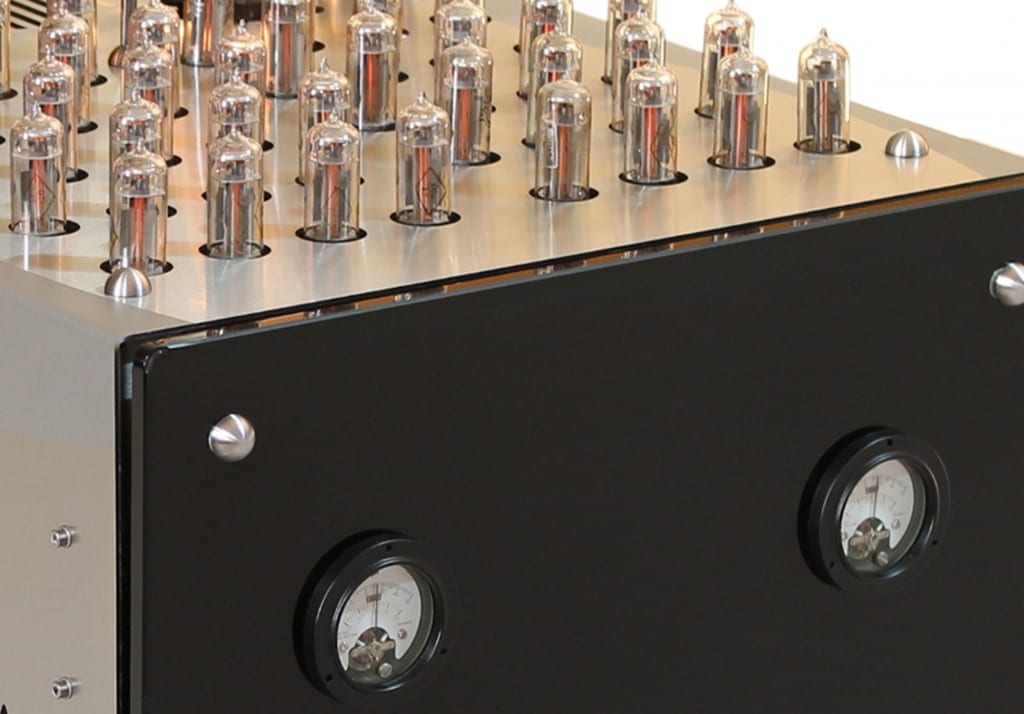
The output stage is a “unique Single ended stage”, a parallel-feed power stage, using 20 power tubes in parallel per channel, loaded by 4 massive chokes, and AC coupled to the output terminals, using an exotic film capacitor.
The capacitor is designed to be able to surge 20.000A peaks, and it’s ESR and ESL specifications, are an “order of magnitude lower than any audio capacitor, film or electrolytic”.
This power tubes used is the 6c19p, a small envelope tube, a very low internal resistance tube, capable of large current swings and was “much preferred over the usual OTL tube candidates in terms of bass slam and timbre”. Also it is very cheap tube to replace.
The tube bank is biased at 2.6A per channel(20W) and at 5.2A for the 80W version! The output stage is a true single ended power gain stage and thus can only operate in Class A. No global or local feedback is used.
The power supply provides 2.6A per channel steady state and the double output stage power supplies, come with double choke filtration and 6 high current high speed capacitors.
The driving stage, is a Directly Heated triode, the 814 tube, a big bottle tube that can deliver 10W of driving power to the output stage.
Driving 20 output tubes per channel at high frequency needs a lot of current, and the 814 tube has a lot to spare. The driver tube is chple loaded, and is DC coupled to the output stage,for supreme slew rate numbers and transparency. The driver stage power supply I s fed by separate transformers and is double filtered using chokes.
All heater and filament supplies have their own power transformer and are douple filtered using chokes and high speed capacitors.
Most OTL have a bad reputation of blowing expensive speakers,after they present DC potential after a malfunction. “The Collatio amplifiers are bullet proof in terms of stability and speaker protection.” Their output stage is AC coupled, so that no DC can be present at any times at the speaker terminal.
The Collatio 20W stereo amplifiers can be used as monoblocks, delivering 80W of OTL SE power with no modification from the user.
Specifications
Full power bandwidth: 6Hz-110KHz
Small signal bandwidth: 4Hz-110KHz
SNR: 110db
Gain: X6 ( 15db)
Full power: 20W @8ohm
80W @8ohm mono configuration
Current idle per channel: 2.6A
Idle power consumption: 1190W(depending on bias level)
Dimenisons: 455mmW X 590mmD X 480mmH (excluding tubes+cage)
455mmW X 590mmD X 630mmH including tube cage
Weight: 120kg
Tube compliment: 2 X 814 , 40 X 6c19p-v




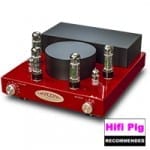
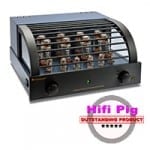

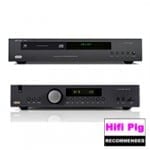

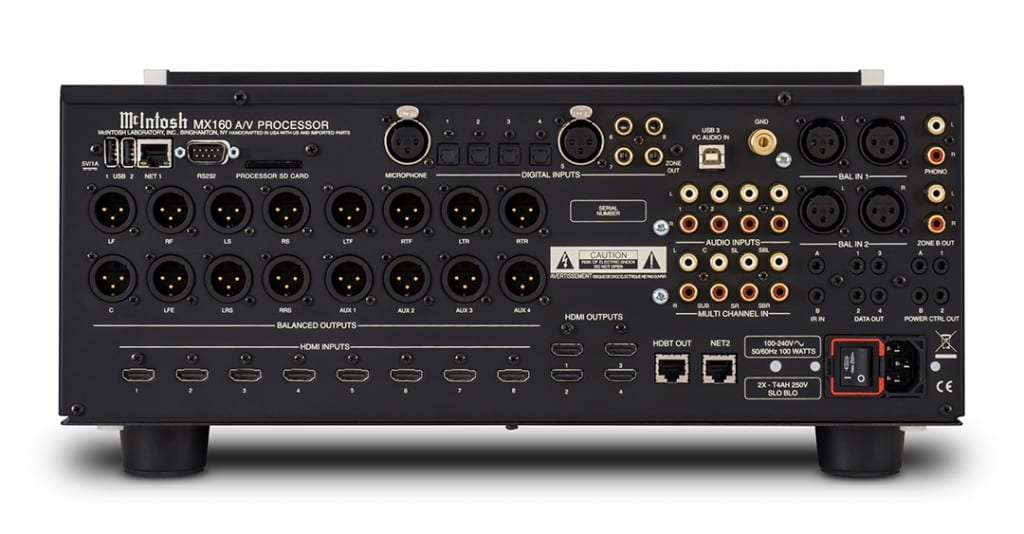
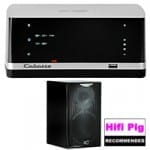

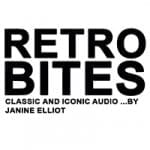

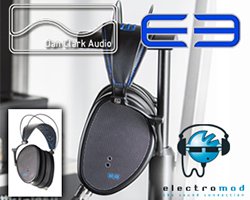







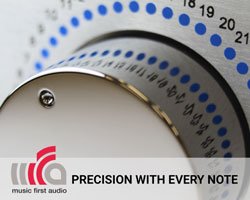







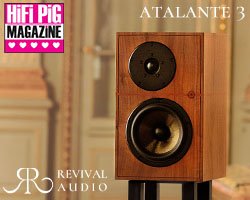






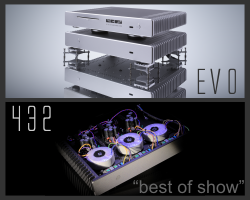
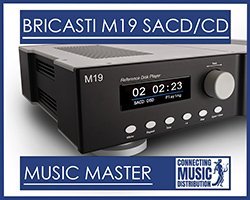
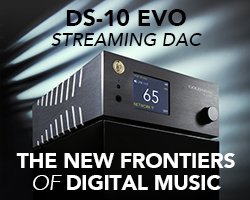

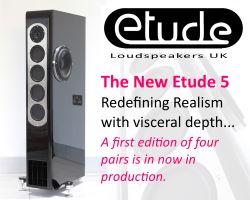






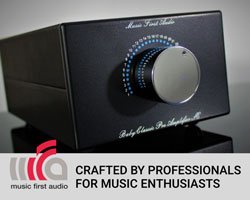


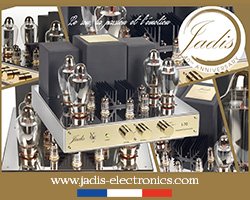


















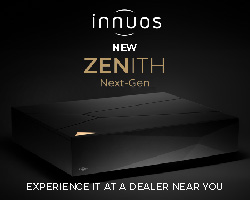
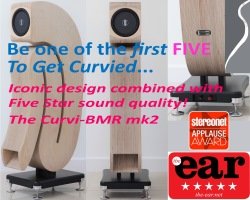
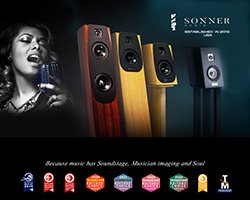
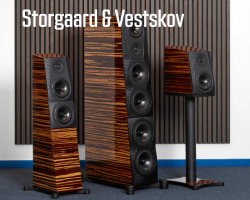














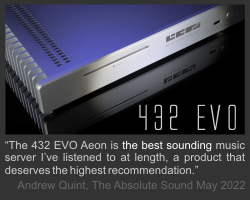
















































Valves or Transistors?
Valves or solid-state? Solid-state or valves? The question that is always getting brought up in audio circles. Ian Ringstead looks at a bit of the history and some of his preferences. More »